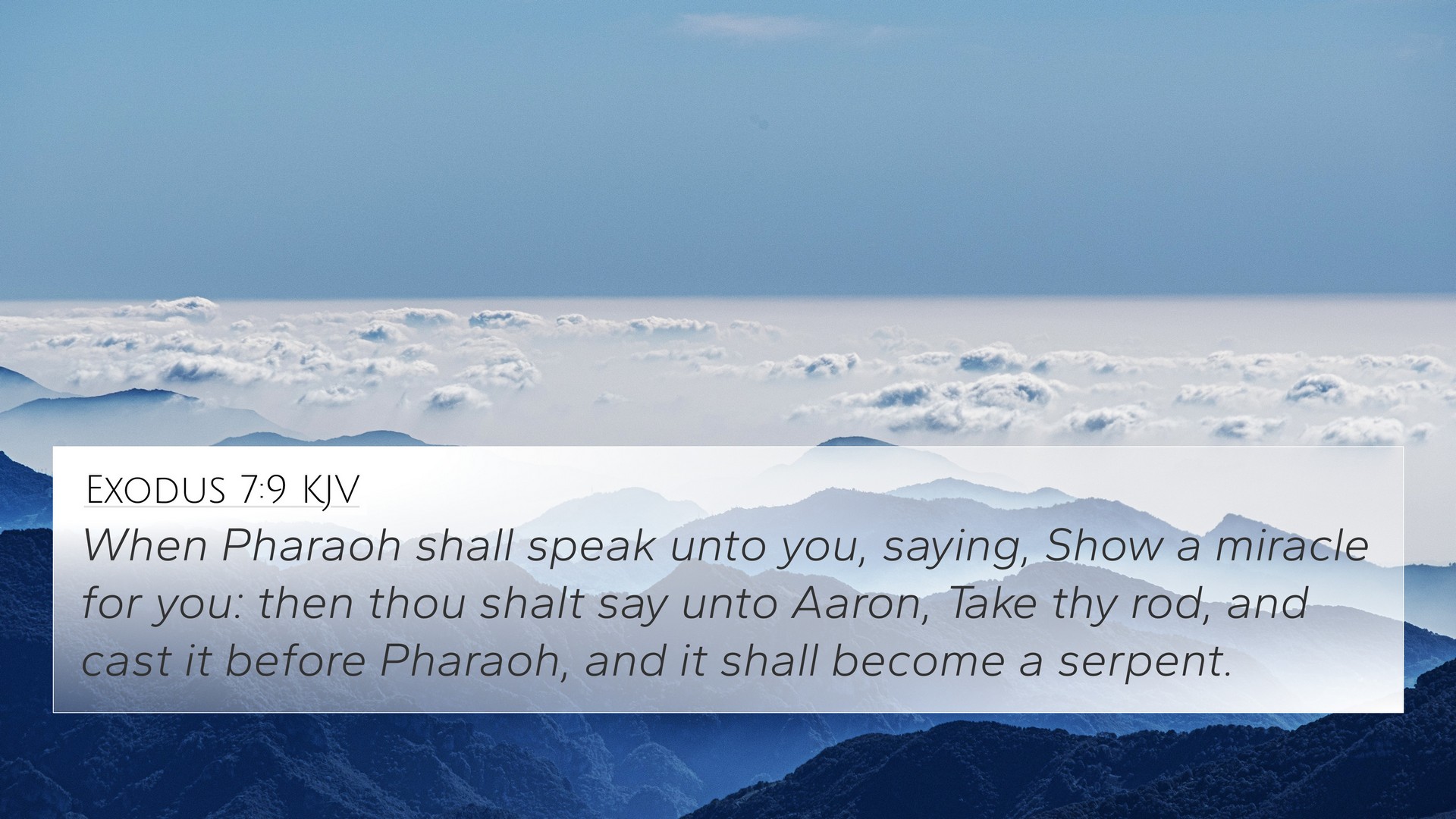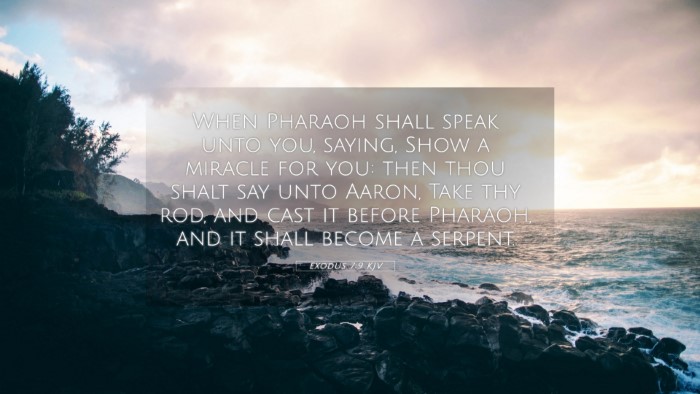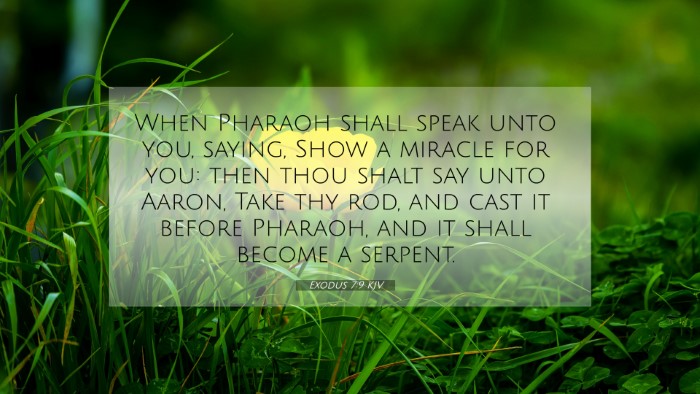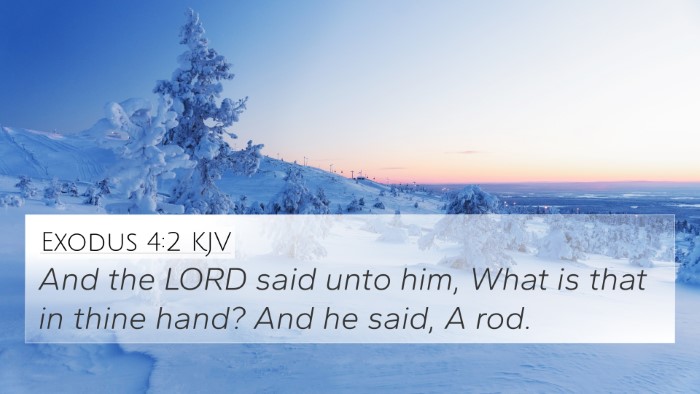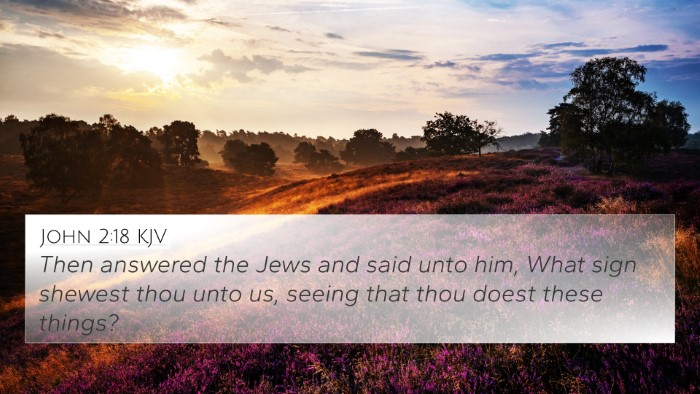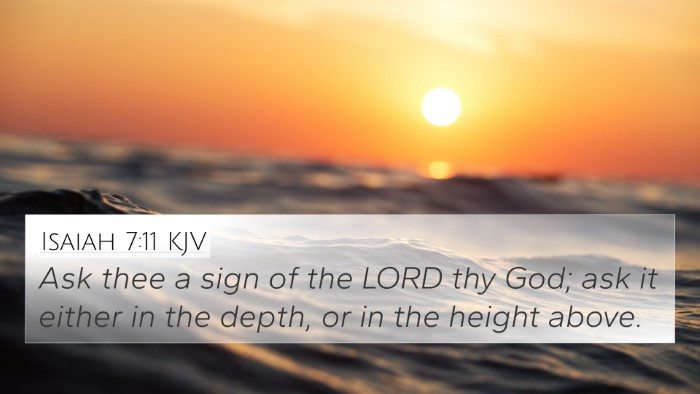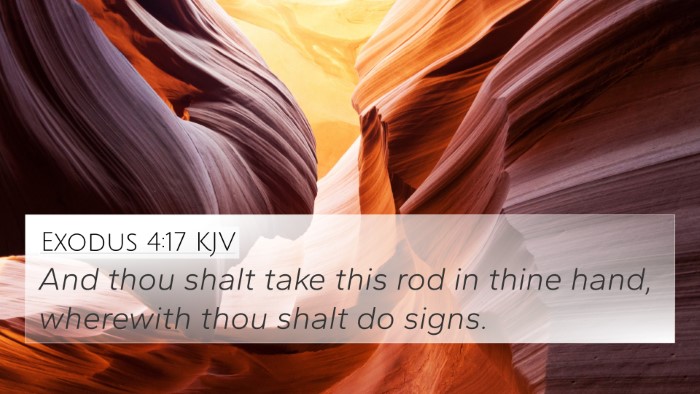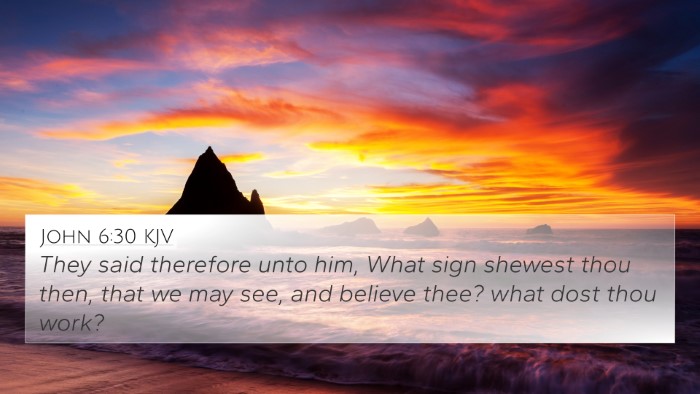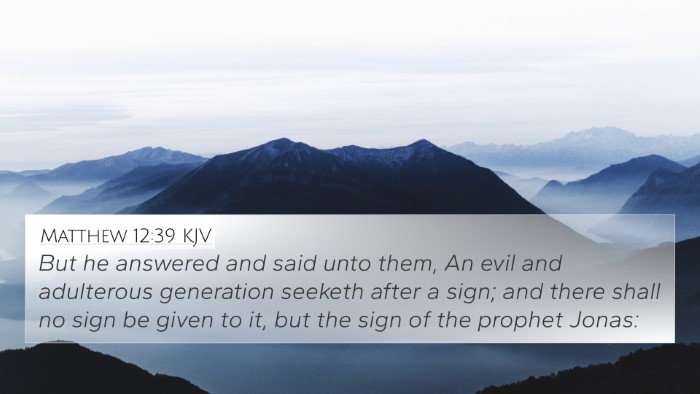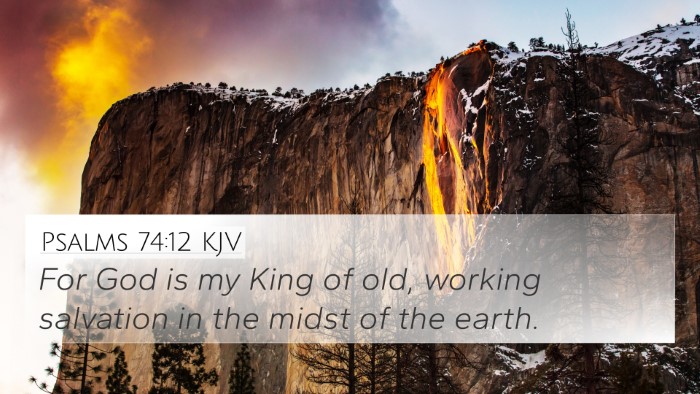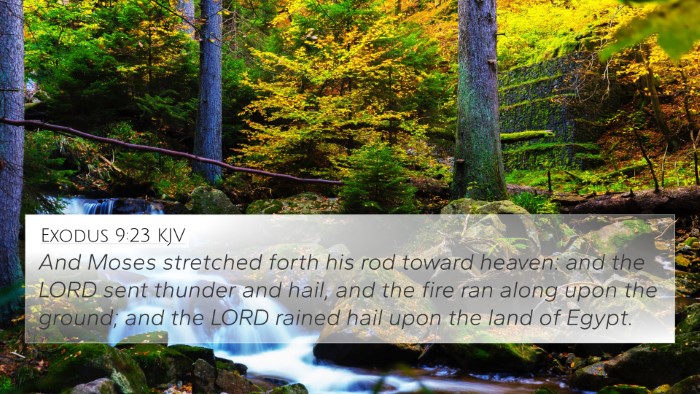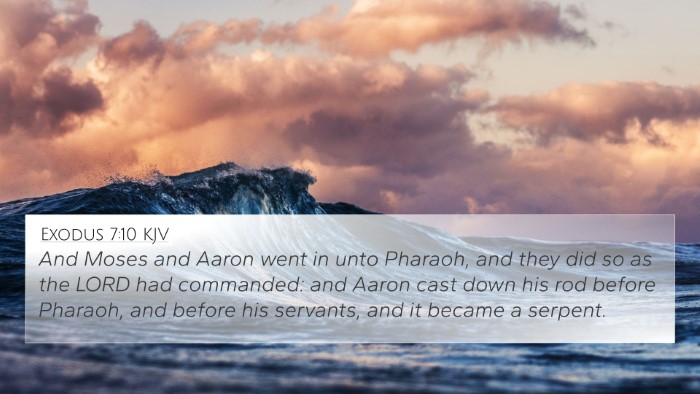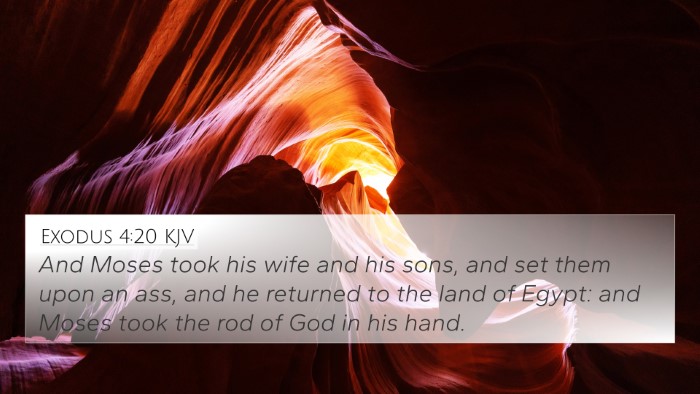Understanding Exodus 7:9
Exodus 7:9: "When Pharaoh speaks to you, saying, 'Show a miracle for yourselves,' then you shall say to Aaron, 'Take your rod and cast it before Pharaoh, and let it become a serpent.'
Overview of the Verse
This verse highlights a pivotal moment in the confrontation between Moses, Aaron, and Pharaoh. It underscores God's command for Aaron to perform a sign that demonstrates divine authority in the face of Pharaoh's skepticism.
Commentary Insights
Matthew Henry's Commentary: Henry suggests that this verse illustrates the demand of signs and miracles from Pharaoh, showcasing his hard-heartedness and skepticism towards God's messengers. The act of turning the rod into a serpent symbolizes God’s power over nature and authority over Egypt’s magicians, who would later attempt to replicate this miracle.
Albert Barnes' Commentary: Barnes notes that the rod’s transformation is significant, as it serves as a decisive proof of Moses and Aaron's divine endorsement. The serpent is a symbol of danger and power, indicating that Pharaoh's kingdom is under threat from the sovereignty of God. This interaction begins the series of judgements on Egypt that will culminate in the Exodus.
Adam Clarke's Commentary: Clarke delves into the symbolism of the serpent, aligning it with the concept of wisdom and cunning attributed to serpents in ancient times. The rod's transformation serves as a warning and a call to repentance for Pharaoh, signifying that wisdom lies in heeding God's commands rather than persisting in disobedience.
Thematic Connections
Exodus 7:9 fits into a broader narrative of resistance against God and the ensuing consequences. The themes of divine authority, human skepticism, and the demonstration of power are prevalent throughout scripture, leading to important cross-references:
- Exodus 4:1-5: Moses's initial doubt and the sign of the rod turning into a serpent.
- Exodus 7:10-12: The confrontation with Pharaoh’s magicians who replicate the miracle.
- Exodus 8:1: The command for Pharaoh to let the Israelites go, reiterating the power of God.
- John 4:48: Jesus mentions the need for signs and wonders for belief, mirroring Pharaoh’s demands.
- Revelation 12:9: The serpent as a symbol of the adversary, illustrating ongoing biblical serpent imagery.
- Matthew 28:18: Jesus declares His authority, echoing God’s power through the miracles performed by Moses and Aaron.
- Romans 1:20: God’s invisible attributes are made evident through creation, akin to God demonstrating His power before Pharaoh.
- Hebrews 11:24-29: The faith of Moses in God’s deliverance parallels the significance of miracles.
Inter-Biblical Dialogue
Exodus 7:9 and its surrounding context initiate a conversation across the scriptures about human authority versus divine command. This sets a precedent, echoing the thematic elements seen in the New Testament, where signs and wonders serve both as confirmation of faith and judgment on disbelief. The linkage provides a richer understanding of God's consistent work through history to lead humanity towards recognition of His supremacy.
Tools for Bible Cross-Referencing
The process of understanding Exodus 7:9 facilitates robust Bible study techniques. Here’s how you can effectively utilize cross-referencing tools:
- Bible Concordance: Use a concordance to find related themes and key terms used in this verse.
- Bible Cross-Reference Guide: Guides can provide a structured way to explore parallel narratives across scripture.
- Cross-Reference Bible Study: Engage in studies that draw connections between themes of authority and signs throughout scripture.
- Bible Chain References: Follow chains of reference that help trace the broader implications of miracles like those commanded in Exodus.
Conclusion
In exploring Exodus 7:9, it becomes evident that this verse is not just a historical account. Instead, it serves as an essential conversation starter in understanding God’s nature, the significance of signs in scripture, and the ongoing dialogue between divine authority and human resistance. For anyone searching for Bible verse meanings, this verse, along with its cross-references, offers profound insight into the themes of faith, authority, and divine engagement in the world.
